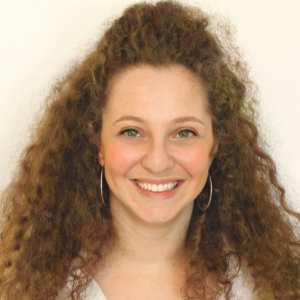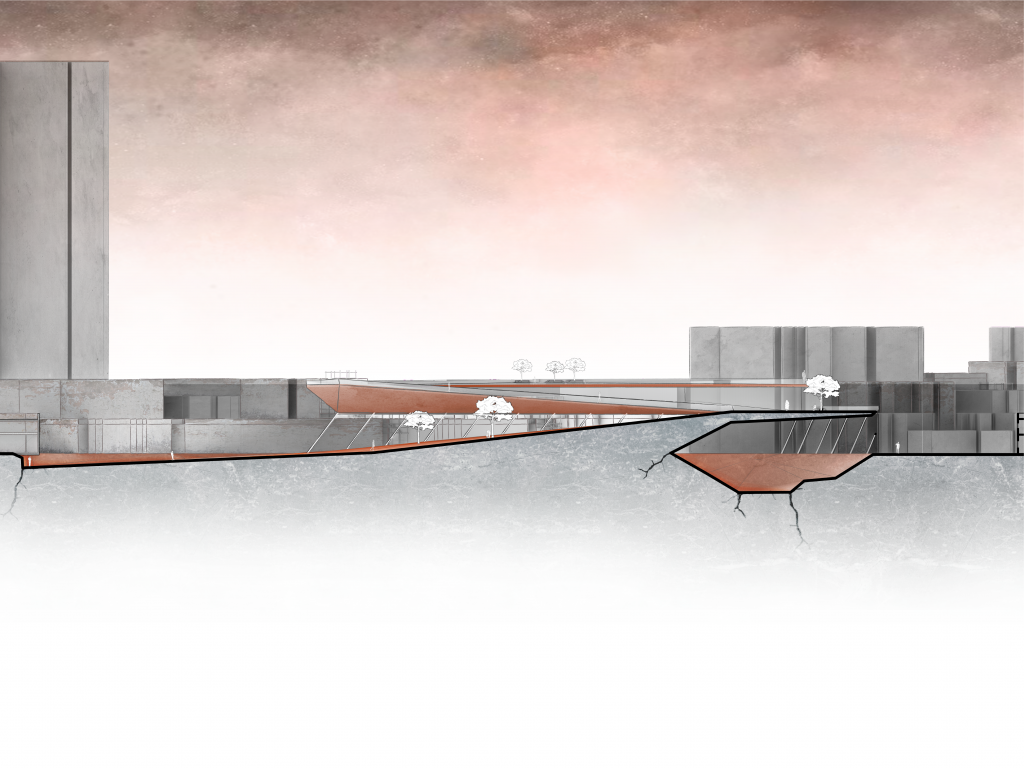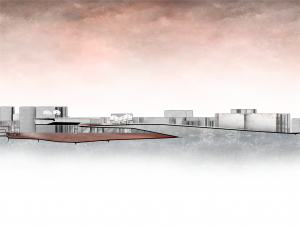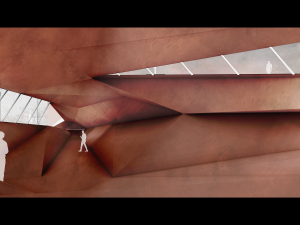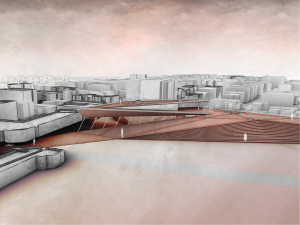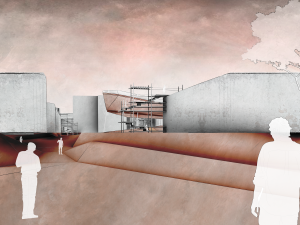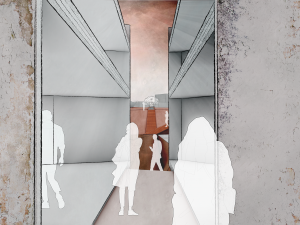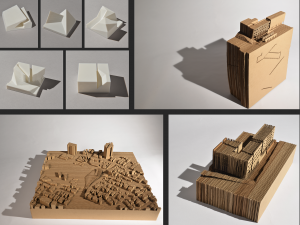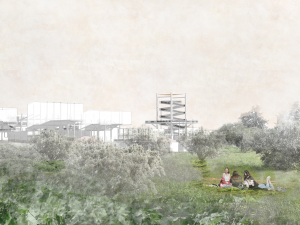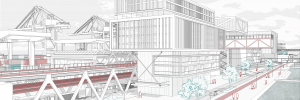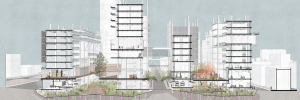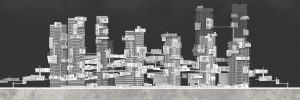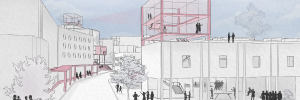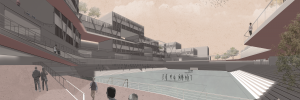No Man’s Land
Prostitution is a cross-cultural phenomenon of sex trafficking. Most research approaches sees it as an act of violence. The spatial organization of prostitution zones in a city is the result of processes that arrange their location according to the local social norms. Typically, the major population group labels sex workers as abject; accordingly, the authorities implement mechanisms that banish prostitution to marginal and neglected parts of the city. This concealment allows prostitution not only to continue but also to prosper in these areas.
Since the phenomenon has distinct spatial characteristics, this project aims to examine how spatial interventions can affect prostitution zones. However, considering that policing mechanisms and laws aimed at eliminating prostitution fail to accomplish their goal, an ambivalent attitude is taken regarding architecture as a sole action capable of eliminating the phenomenon. Therefore, in analyzing the relationship between urban space and prostitution, the project seeks to develop disruptive architectural tools in order to expose the heavy price of this suppressed phenomenon in the urban environment.
A mapping of active prostitution zones in Tel Aviv points to the old Central Station area as the most intense prostitution scene today. This zone is characterized by apathy to happening within it. In fact, it is saturated with structural adaptations that enable the prosperity and availability of prostitution alongside day-to-day life. At such, an architectural design that opposes the current characteristics of this zone could possibly counteract the transparency of women in prostitution. Accordingly, this project posits a new design strategy for surfaces. It proposes an intervention, in the form of excavation, at the surface level of streets connecting the major zones of prostitution. The old Central Station lot – the center of activity – marks the culmination of the change, where the ground breaks apart completely over the skyline. The borders of these interventions define the directions for Building-Cuts that run outwards to the prostitution sites and create an alternative walkways network. The synergy of these actions blurs the line between inner and outer spaces – between private and public – in a way that unearths what is happening under the surface.
These interventions, which question the stability of this urban space, break the “spatial-apathy” and emphasize the abnormality of the place. In fact, the project presents an alternative space, where the heavy price of prostitution is present, through architectural actions that expose and disrupt the urban environment that is routinely used as an uninterrupted scene of prostitution.


